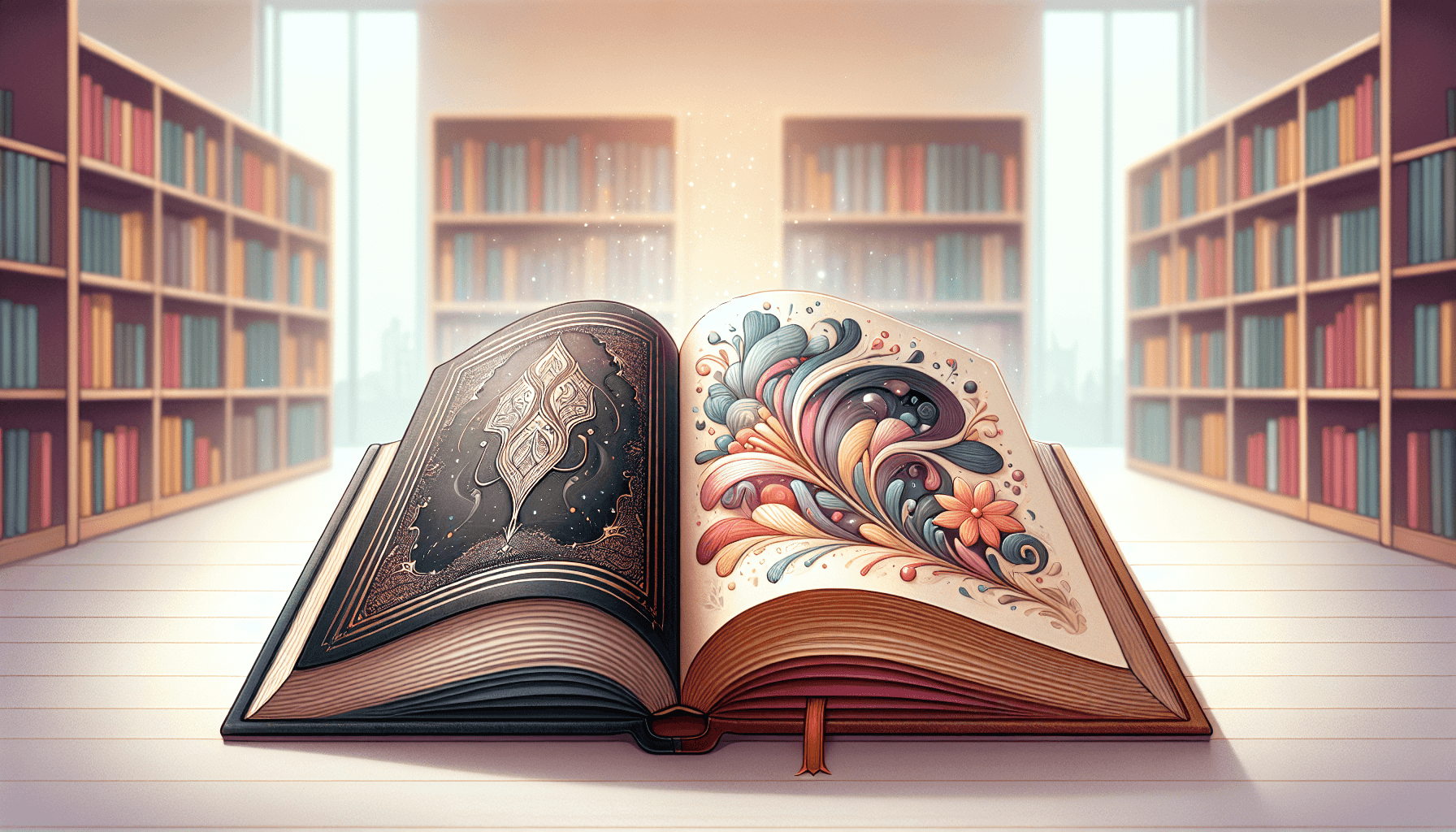Table of Contents
Hey there! If you’ve ever found yourself stuck deciding between paperback and hardback books, you’re not alone. Many readers face the same dilemma, wondering which format truly suits their needs and lifestyle.
Stick around, and I promise you’ll discover the key differences between these two types of books. By the end of this exploration, you’ll feel more informed and confident in your next book-buying decision.
We’ll kick things off by defining both paperback and hardback books, then dive into their features, differences, and what might work best for you!

Definition of Paperback Books
Paperback books are typically characterized by their flexible, paper-based covers and are often more affordable compared to their hardback counterparts.
These books come in various sizes, but most have a size that is easy to hold and carry, making them popular among casual readers and students alike.
Description
Usually, paperback books are composed of a number of pages glued together rather than stitched, which helps in keeping production costs low.
They can feature either a matte or glossy finish, providing versatility in terms of visual appeal and texture for the reader.
Common Features
A common feature of paperback books is their lightweight design, which makes them particularly portable, easy to tuck into bags, and perfect for reading on the go.
Additionally, many paperback editions include unique aspects like ‘book club’ editions, where the book may come with discussion questions or recommendations for further reading.
Examples of Popular Paperback Titles
Some of the most beloved paperback titles include classics such as George Orwell’s 1984 and more contemporary favorites like John Green’s The Fault in Our Stars.
These titles not only resonate with readers but often become staples in book clubs, personal libraries, and academic settings.
Definition of Hardback Books
Hardback books, often referred to as hardcover books, are known for their rigid protective covers, which confer a sense of durability and a premium reading experience.
They are usually designed for long-lasting use, and many collectors favor them for their aesthetically pleasing presentations on bookshelves.
Description
Hardcover books often come with dust jackets that feature stunning artwork and information about the book, adding to their visual appeal and collector’s value.
The solid construction of hardbacks offers added protection for the pages, making them less susceptible to wear and tear over time.
Common Features
Many hardback books also include additional enhancements such as ribbon bookmarks, embossed covers, and higher-quality paper, contributing to a luxurious feel.
These features make hardbacks ideal for gift-giving as they present an impression of thoughtfulness and durability.
Examples of Popular Hardback Titles
Among well-known hardback titles are literary masterpieces like Harper Lee’s To Kill a Mockingbird and bestselling series such as J.K. Rowling’s Harry Potter.
These books not only command attention on display but also often feature special editions that collectors find irresistible.
Main Differences Between Paperback and Hardback
Cover Material
The primary difference between paperback and hardback books lies in their cover materials, with hardbacks utilizing rigid boards for enhanced protection.
This distinction often influences readers’ preferences, particularly those who appreciate the sturdiness of hardbacks.
Price Comparison
In general, paperback books are priced lower than hardbacks, making them more accessible for budget-conscious readers.
This factor often plays a significant role in choices, particularly for students or those purchasing for casual reading.
Durability and Longevity
Hardcover books are typically more durable than paperbacks; their sturdy construction means they can withstand the rigors of frequent use without as much damage.
Additionally, hardbacks tend to have a longer lifespan, which is appealing for readers who value their books as enduring keepsakes.
Size and Weight
Paperback books are generally lighter and more compact, making them easier to carry in bags or read on public transport.
Conversely, hardback books, while sometimes larger and bulkier, tend to offer a more substantial feel that many readers find satisfying.
Design and Aesthetics
From a design perspective, many readers appreciate the refined look of hardback editions, often preferring their presence on bookshelves.
Moreover, the visual appeal of elegant covers and dust jackets frequently enhances the decor of a reading space.

Reading Experience
Comfort and Handling
When it comes to reading experience, many people find paperbacks easier to handle due to their lighter weight.
The flexibility of paperback covers allows readers to easily maneuver the book without worrying about damaging it.
In contrast, some readers appreciate the sturdiness of hardbacks, as they can lay flat when opened, enhancing the reading experience.
Easy to Use for Bookmarks
Paperbacks often feature a thin spine, making it convenient to slip in a favorite bookmark without adding bulk.
On the other hand, hardbacks may have thicker spines, which can create a bit of a challenge for those who love to use bookmarks.
However, some hardback editions come with built-in ribbon bookmarks, adding an elegant touch to the reading experience.
Visual Appeal
The visual appeal of both paperback and hardback books can greatly influence a reader’s choice.
Paperback covers often focus on vivid artwork or engaging designs that attract casual readers.
In contrast, hardbacks may feature intricate dust jackets or embossed designs, making them attractive as display pieces.
Storage and Display
Shelf Space Requirements
When it comes to storage, paperbacks usually require less shelf space due to their smaller dimensions.
This compactness makes them ideal for readers with limited bookshelf space or those who prefer a minimalistic approach to book collecting.
Hardbacks, being bulkier, may take up more room, but they can create an impressive visual display on shelves.
Stackability
Paperbacks naturally lend themselves to easy stackability, allowing readers to arrange them in creative ways.
However, stacking too many paperbacks can sometimes lead to bending or creasing, which is less of a concern with hardcovers.
Hardbacks, thanks to their rigid structure, can typically be stacked without worrying about damage.
Appearance on Shelves
The appearance of books on shelves can tell a story about a reader’s preferences.
Paperbacks often create a casual and eclectic look, which can be appealing for some.
In contrast, hardbacks can exude elegance, particularly when displayed in a neatly organized collection.
Target Audience
Readers’ Preferences
Different readers have varying preferences when it comes to choosing between paperbacks and hardbacks, and these choices are often influenced by their reading habits.
Many avid readers favor hardbacks for their durability and aesthetic appeal, while others may prefer the affordability and portability of paperbacks.
Understanding a reader’s lifestyle can help clarify which format they might enjoy most.
Occasion-Based Choices
Occasion often plays a crucial role in determining whether readers opt for paperbacks or hardbacks.
For casual reading on vacation or commuting, many people lean towards light and portable paperbacks.
However, for gift-giving or special occasions, hardbacks are often the preferred choice due to their premium feel and visual charm.
Collectors’ Interests
Collectors often gravitate towards hardback editions for their superior quality and collectible nature.
Limited edition or signed hardbacks can become sought-after items, reflecting the reader’s passion for the books they love.
Although some collectors do appreciate paperbacks, it’s often hardbacks that take center stage in a serious collection.
Environmental Impact
Materials Used
The production of paperback and hardback books involves different materials that can impact the environment in various ways.
Paperbacks are typically made with thinner paper, which can require fewer resources compared to hardbacks, but the quality of materials matters.
Hardbacks often use higher-quality materials, which can be more sustainable if sourced responsibly.
Production Practices
Production practices also play a role in the environmental impact of book publishing.
Many publishers are now adopting sustainable practices, such as using recycled paper or eco-friendly inks.
This shift is evident in both paperback and hardback books, making it possible for environmentally conscious readers to find options that align with their values.
Recycling Options
When it comes to recycling, both paperback and hardback books can often be recycled, but the process may differ slightly.
Paperback covers are generally easier to recycle than the harder materials found in hardbacks.
Nonetheless, many communities have programs that can handle both formats, allowing readers to make responsible choices when decluttering their shelves.

Conclusion
Summary of Key Points
In summary, both paperback and hardback books offer unique advantages tailored to different reader preferences.
Paperbacks are lightweight, affordable, and perfect for on-the-go reading.
On the other hand, hardbacks provide a sense of durability, visual appeal, and increased longevity.
Ultimately, the choice between the two formats may boil down to personal preferences, occasions, and specific needs.
Personal Preference Considerations
As you make your decision between paperback and hardback, consider what you value most in your reading experience.
If you’re a casual reader who enjoys portability and affordability, paperbacks might be your best bet.
However, if you appreciate a book’s aesthetic appeal and durability, and you’re willing to invest a bit more for that experience, hardbacks could be the way to go.
Ultimately, whether you prefer the charming flexibility of a paperback or the impressive sturdiness of a hardback, there’s something special about the experience of holding a book in your hands.
FAQs
The main differences include cover material, price, durability, size, and design aesthetics. Paperbacks are typically lighter and less expensive, while hardbacks offer more durability and a premium appearance.
Hardback books are generally better for long-term storage due to their sturdier construction and durability, which helps them withstand wear and tear over time compared to paperbacks.
Paperback books often use less material, making them more environmentally friendly. However, hardbacks typically have a longer lifespan, potentially reducing the need for replacements.
Collectors often prefer hardback books due to their durability, higher quality materials, and visual appeal. First editions or special edition hardbacks can hold significant value, making them desirable among collectors.



